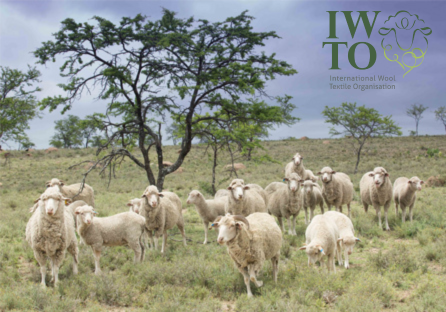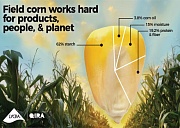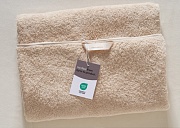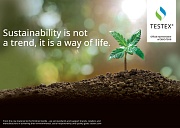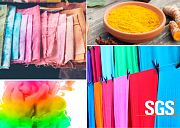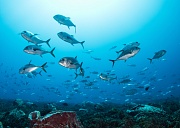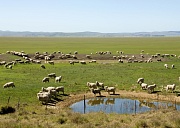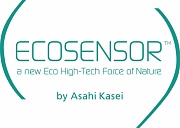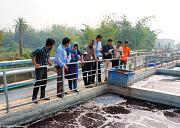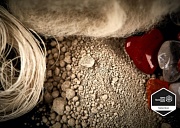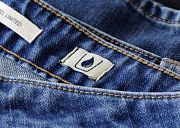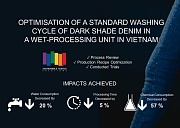SPONSORED CONTENT - Slow and steady wins the race, says the International Wool Textile Organisation.
We all know the Aesop fable about the hare and the tortoise. It comes to mind when looking at EU’s ambitious textile strategy and its aim to put fast fashion out of fashion with a plethora of policy measures.
If the aim is to win the race against climate change, should we bet on the hare or the tortoise?
Rewriting the old fable, we can equate the hare with technological innovations such as fibre measurement tools to make projections about durability, longevity and repairability. These are ingredients in many EU policy instruments, including the EU’s Product Environmental Footprint Category Rules (PEFCR), Extended Producer Responsibility (EPR), the Ecodesign Directive and Green Claims Directive.
The tortoise, on the other hand, represents the slow and the steady, processes that stand the test of time.
Meet the hare
Most tools in the EU’s Textile strategy and the underpinning policy currently favour synthetic-based fabrics.
During a recent Lasting project seminar (see lasting.world), Ingun Grimstad Klepp, Professor of Clothing and Sustainability at Consumption Research Norway at Oslo Metropolitan University, said: “If we are demanding more durable products, using standard tests for strength, pilling, colour-fastness and abrasion, this means more plastic in apparel.
“If we are looking at regulation of waste, eco-modulating fees based on weight, we favour plastic apparel, as synthetics in general are lighter.
“If we are looking at recycled content as a policy tool, synthetics win again, even though this will mainly be from recycled bottles.
“And, last but not least, if we use LCAs to dictate what are preferred fibers, synthetics come out ahead.”
Research shows us that consumers prefer natural fibers over synthetics.i
Meet the tortoise
The tortoise takes a different tack. Rather than projecting what products will have a long life, the tortoise urges consideration of one factor: how long an item of fashion has been used.
Actual use means the reality of use, regardless of how durable, repairable, or recyclable the apparel item is projected to be.
We can understand actual use through a very simple technique: the humble waste audit.
The biggest hurdle in this race: overproduction
The main problem in the fashion sector is overproduction. Images of clothing-clogged beaches and textile mountains, from the Atacama Desert in Peru to the beaches in Ghana, should haunt us. The OR Foundation has started its own waste audits, which will give us valuable data that can feed into the EU’s policy tools. The revised EU Waste Framework Directive proposes that biannual waste audits take place in all EU Member States.
If all apparel and other textile labels include the date products go to market, these audits will show the actual Duration of Service.
Research shows that the majority of clothing is not thrown out because it is worn out, but because it no longer fits, or we have grown tired of itii. Looking at durability for clothing the way we would for a toaster or a battery simply does not capture the true picture.
In the meantime, one waste audit pilot study, completed earlier this year in Norwayiii, showed that 80% of the brand and care labels in diverse waste streams were intact, offering sufficient data to pinpoint which brands and what products have had a long or a short life; and what the fiber-composition is. The study also revealed a number of items were discovered with the price-tag still intact, having never been used at all.
A similar study in Holland had many of the same findingsiv; 75% of labels were intact. As in the Norwegian study, a few brands dominated the findings, ones identifiable as “fast fashion” (albeit a term that requires more precise defining).
The real winner: climate neutrality by 2050
The real winner of this race is neither the tortoise nor the hare. The real winner is the planet, in the form of climate neutrality by 2050.
To get there, a just transition is required that safeguards better use of our natural resources. Natural fibres, such as wool, are worthy of attention and should be rewarded for their contributions as renewable, biodegradable resources.
There is no silver bullet; slow and steady will be part of winning this race.
i Schytte Sigaard, A. & Laitala, K., 2023, Natural and Sustainable? Consumers’ Textile Fiber Preferences. Special Issue Natural Fiber and Competitiveness. https://www.mdpi.com/2079-6439/11/2/12
ii Laitala, Kirsi and Klepp, I.G., 2022, Review of clothing disposal reasons. SIFO/Oslo Metropolitan University. https://clothingresearch.oslomet.no/2022/10/19/review-of-clothing-disposal-reasons/
iii Klepp et al., 2023, USED, BUT NOT USED UP: Using textile waste to inform textile rating schemes. SIFO/Oslo Metropolitan University. https://clothingresearch.oslomet.no/wp-content/uploads/sites/1026/2023/09/Used-but-not-used-up.pdf
iv https://reports.fashionforgood.com/report/sorting-for-circularity-europe/






